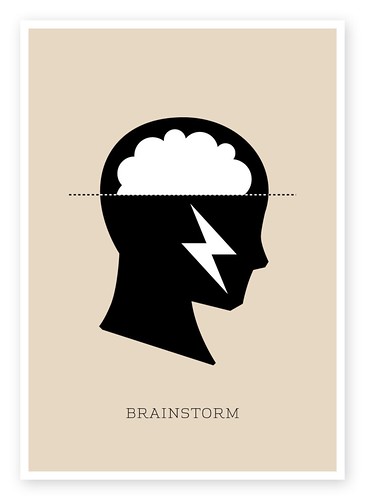This is first in a series of posts about the Seven Strands of Creative Development: Self-Instigation, Research/Investigation, Generation, Experimentation, Analysis, Creative Sustain, and Collaboration.
Over the next while, I'd like to explore the Seven Strands of Creative Development. Again, these are proposed by my professor and creativity guru, Robert Kelly, in his book Creative Expression, Creative Education, and continued in his second, brilliant book about creativity in education called Educating for Creativity. Understanding the seven strands will help you, as an educator, to guide your students and push them past barriers that might get in the way of them being creative. This would be particularly good to know if you do 20% Time or Genius Hour with your students.
Self-instigation is a shift from teacher directed to student directed learning. Self-instigation means students are coming up with the topics, ways of learning, and ways of demonstrating their understandings. It inherently has an element of personal relevance to the student. Students mine their passions, strengths, and curiosities to self-instigate.
Probably the biggest pitfall you'll run into with the self-instigation strand are students who are used to knowing the outcome before they begin. They are unused to being the one making the decisions about what they will learn and how they will do it, and are unsure how to begin. In 20% Time, asking students about their "blue sky" ideas is a good way to get them out of this negative space and into a positive, optimistic one. You can ask, "What is something you've always wanted to learn?" or "What is something you've always wanted to do or make?" or "What's a problem you want to solve?"
Next, you will want to help them grow their list of ideas. Another pitfall at this stage is early closure, where students come up with a good idea and want to stop there. Push them. Help them understand that the more ideas they have, the better their chances are they're going to come up with something truly fascinating. I'd like to experiment with this in my Humanities projects next year, and have students come up with three really good ideas for a project before settling on the one they're going to pursue. Too often in my classroom, kids would receive a project and then decide immediately what they wanted to do. I think many opportunities for creativity were probably stifled right there. Explain to kids that their original good idea will still be there when they're done, but you never know what might come up in the meantime! No harm in exploring other options!
One of my favourite ways to have kids grow their list of ideas is through speed dating. In that model, they steal ideas from each other, and it's a good thing! Giving away ideas to each other helps build community, and also helps those students who are really stuck. Anytime they hear something they think is a good idea, or any time something someone else says sparks a new idea in them, they add it to their own list. By the end, their list will be much bigger than they started with, and for most students, they will have tapped into some much more innovative ideas than they started with.
In the end, after the students go through their idea-generation phase, you may still have a few who really can't identify their passion. There were four such students in my class during 20% time this year who fit this bill. So I brought all of them together, and we just sat down and chatted. I asked them questions, like, "When you feel the best, what are you doing?" and "What are your talents?" and "What are you curious about?" Just that one-on-one time helped these students settle on something they were happy to spend a semester learning about.
Self-instigation is definitely possible in the other 80% of your day, too. There may be more constraints, but often constraints actually help students be creative. For example, in our final project,
students were given some options, but there was also something that
read, "Got a better idea? Propose it." They had a clear objective (constraint), which was to explain, using Humanities, science, and math concepts, how an environmental or cultural shift would impact the worldview of a people. Within that constraint, though, there was plenty of opportunity for self-instigation. And our students, having spent
the entire year in project-based learning, ran with it. We got some
ideas out of the students that were way better and more intriguing than
the options we gave them. My favourite was, "What if the continents
drifted to create another Pangaea?" Such an interesting idea!
Self-instigation is a skill that needs to be practiced, but one that really pays off - students are way more engaged in their work, because it's something they thought of, something they really want to learn about and do. Right there, you've got two of Daniel Pink's three conditions for motivation: purpose and autonomy (mastery comes later). What a way to start off a learning experience!


No comments:
Post a Comment